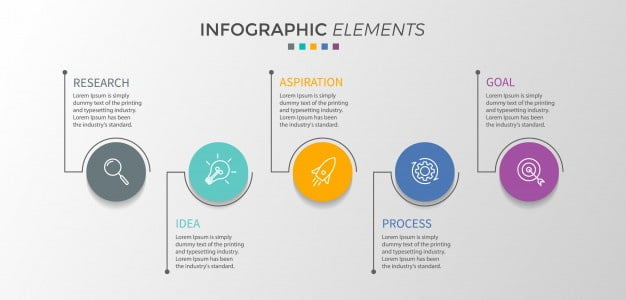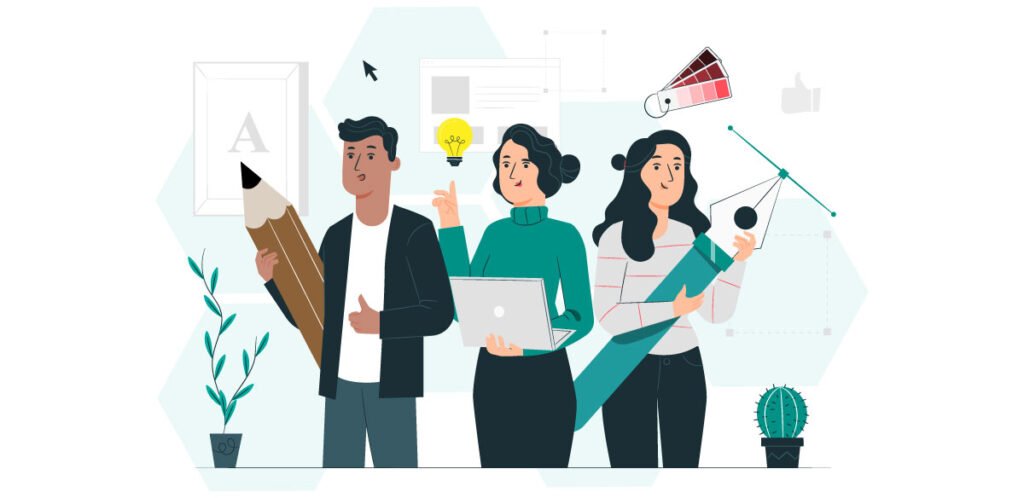As we enter a new year of possibilities, there are newer themes, thinking processes, and trends for the enterprise design thinking methodology. The human-centered design landscape has seen immense evolution. This article will outline the emerging trends and future of design thinking.
What’s coming up for design thinking in 2022?
We know how the ideology of thinking innovation and creative problem-solving guides design thinking methodology. Whether you are a regular practitioner of system design thinking or are just getting comfortable with the concept, the following will (and must) play a role in your journey to be more creative at design thinking and innovation.

1. Systems Thinking
Today’s world is vastly connected and interdependent than ever before—the flow of information is fast and almost instantaneous. Since everything is so tightly coupled and quick, even a small change in one part can significantly (mostly negatively) impact the whole system.
As the name suggests, system design thinking is a discipline of identifying the needs and interests of each stakeholder in the ecosystem of a product or service and then designing for the most influential one.
Systems thinking, therefore, requires consideration of the primary stakeholders and their interaction and influence on other stakeholders. Unlike design thinking and innovation, which is a human-centered design approach, systems thinking is more of a stakeholder-centered design.
However, systems thinking is not only about stakeholder-centered design. Instead, it’s about understanding as many elements as possible within the product, service, and business system.
Also, Read – Design Thinking in Mobile Apps
2. Resilience Thinking
We seek to achieve perfection with design thinking; the question, however, is, perfect for what? So, while discussing resilience in a solution—its ability to withstand inevitably changing circumstances—we must think beyond the spatial boundaries of the problem at hand.
The enterprise design thinking approach asks, “are we solving the right problem?” On the other hand, resilience thinking asks, “how relevant will the final solution be if the problem space evolves?”
To add resilience to your design thinking methodology, take time to understand the broader problem space you’re working on.
3. Humanity-centered Design
Human-centered design and aggressive prototyping are the pillars on which the concept of the design thinking process rests. The former is why today’s design-focused products and services are booming.
But, as we move to future full of uncertainties on climate change, international tensions, political instability, and other inequalities, we need to start thinking innovation for more significant problems.
This is where we enter humanity-centered design, which focuses on environmentally friendly, sustainable solutions. It embraces the mindset that what isn’t suitable for an individual will also harm a community.
While working with a humanity-centered mindset, ask yourself if the solution you’re proposing provides a stellar experience and leads to a sustainable future.

4. Inclusive Thinking
Research findings continue to emphasize the importance of diversity in innovation. On a brighter note, it’s becoming increasingly common for designers to ask and also answer questions like, “are we involving the right kind of people in this problem?” or “who should voice this problem, or are we neglecting any community, and how can we fix it?”
Moreover, it simply makes sense if innovation is rooted in creativity, then having a broader perspective on a more comprehensive range of backgrounds, sources, and thought styles is desirable.
Being inclusive can be categorized as being inclusive for collaborators and users. The former would mean including different teams in the project to leverage fresh perspectives and backgrounds. Conversely, the latter would mean a broad set of users to minimize the possibility of neglecting any community.
But how do you practice inclusive design? Simple, keep aside all your bias, even unconscious bias, and think of innovative solutions.
5. Mastering the POV
Shifting your attention away from problem-solving and focusing more on problem identification and problem-framing is a core part of the design thinking approach, an influential and sought-after process.
Design thinking is a concept for businesses pursuing constant innovation and creativity. In the coming year, we should look forward to exciting product innovation and immersive experiences related to AR/VR and telemedicine as design thinking gains more traction on its added benefits.
Bottom line: How can we improve people’s lives with products and services that deliver a stellar user experience without being intrusive?
If you wish to seek assistance transitioning to a design-thinking organization, talk to an expert UX design company for a seamless course of action.




